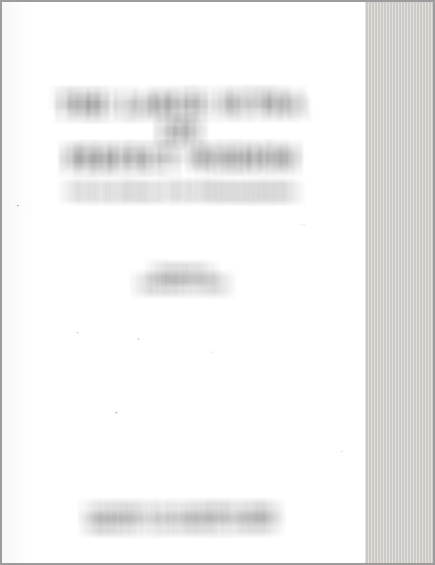Brihat Jataka by Varahamihira [Sanskrit/English]
by Michael D Neely | 2017 | 105,064 words
The Sanskrit text and English translation of the Brihat Jataka of Varahamihira.
Verse 8.10
पाकस्वामिनि लग्नगे सुहृदि वा वर्गे अस्य सौम्ये अपि वा प्रारब्धा शुभदादशा त्रिदश षड् लाभेषु वा पाकपे ।
मित्रोच्चोपचयत्रिकोणमदने पाकेश्वरस्य स्थितश्चन्द्रः सत् फल बोधनानि कुरुते पापानि चातोऽन्यथा ॥ १०॥
pākasvāmini lagnage suhṛdi vā varge asya saumye api vā prārabdhā śubhadādaśā tridaśa ṣaḍ lābheṣu vā pākape |
mitroccopacayatrikoṇamadane pākeśvarasya sthitaścandraḥ sat phala bodhanāni kurute pāpāni cāto'nyathā || 10||
When the lord of the results is situated in the lagna or a friendly (zodiac sign) or its varga, or when a benefic, or the lord of the results is in the 3rd, 10th, 6th, or 11th houses; the commenced dasha causes auspiciousness. The Moon situated in a friend’s, exalted, upachaya, trikona, or 7th house are those indicating auspicious results. And otherwise from this it creates evils.
English translation by Michael D Neely (2007)
Word-for-Word grammar analysis breakdown
pāka = result
svāmin = lord
pākasvāmini (stem form: pākasvāmin) (masculine, locative, singular) = when the lord of the results
lagna = lagna ga= situated
lagnage (stem form: lagnaga) (masculine, locative, singular) = when situated in the lagna
suhṛdi (stem form: suhṛd) (masculine, locative, singular) = when in a friendly (zodiac sign)
vā (conjunction) (indeclinable) = or
varge (stem form: varga) (masculine, locative, singular) = when in a varga
asya (pronoun, 3rd person, masculine/neuter, genitive, singular) = of this
saumye (stem form: saumya) (masculine, locative, singular) = when a benefic planet
api (adverb) (indeclinable) = also vā (conjunction) (indeclinable) = or
prārabdhā (stem form: prārabdhā) (past passive participle, feminine, nominative, singular) = commenced
śubhadā (stem form: śubhadā) (feminine, nominative, singular) = causes auspiciousness
daśā (stem form: daśā) (feminine, nominative, singular) = dasha
tri = third
daśa = tenth ṣaḍ = sixth
lābha = eleventh
tridaśaṣaḍlābheṣu (stem form: tridaśaṣaḍlābha) (masculine, locative, plural) = in the third, tenth, sixth, or eleventh houses
vā (conjunction) (indeclinable) = or
pāka = result
pa = lord
pākape (stem form: pākapa) (masculine/neuter, locative, singular) = lord of the results
mitra = friend
ucca = exalted
upacaya = upaychaya (3rd, 6th, 10th, and 11th)
trikoṇa = trikona (1st, 5th, and 9th)
madana = 7th mitroccopacayatrikoṇamadane (stem form:
mitroccopacayastrikoṇamadana) (masculine, locative, singular) = in a friend’s, exalted, upachaya, trikona, or 7th house
pāka = result
īśvara = lord
pākeśvarasya (stem form: pākeśvara) (masculine, genitive, singular) = of the lord of the results
sthitas (1st class verb root: sthā) (past passive participle, masculine, nominative, singular) = situated
candras (stem form: candra) (masculine, nominative, singular) = the Moon
sat = auspicious
phala = result bodhana = indicating
satphalabodhanāni (stem form: satphalabodhana) (neuter, nominative, plural) = those indicating the auspicious results
kurute (8th class verb root: kṛ) (present indicative, passive, 3rd person, singular) = it creates
pāpāni (stem form: pāpa) (neuter, accusative, plural) = evils
ca (conjunction) (indeclinable) = and atas (adverb) (indeclinable) = from this
anyathā (adverb) (indeclinable) = otherwise
Glossary of Sanskrit terms
Note: This extracts Sanskrit terms and links to English definitions from the glossary, based on an experimental segmentation of verse (8.10). Some terms could be superfluous while some might not be mentioned. Click on the word to show English definitions.
Paka, Svamin, Svamini, Lagna, Suhrid, Var, Varga, Idam, Saumya, Api, Prarabdha, Shubhada, Ashan, Tridasha, Shat, Shash, Labha, Mitra, Ucca, Upacaya, Trikona, Adana, Ishvara, Sthita, Candra, Sat, Sad, Phala, Bodhana, Kuruta, Papa, Anyatha,
Other editions:
Also see the following editions of the Sanskrit text or (alternative) English translations of the Verse 8.10

Brihat Jātaka of Varāhamihira
by Michael D Neely (2007)
Edition includes original Sanskrit text, English translation and word-for-word analysis.